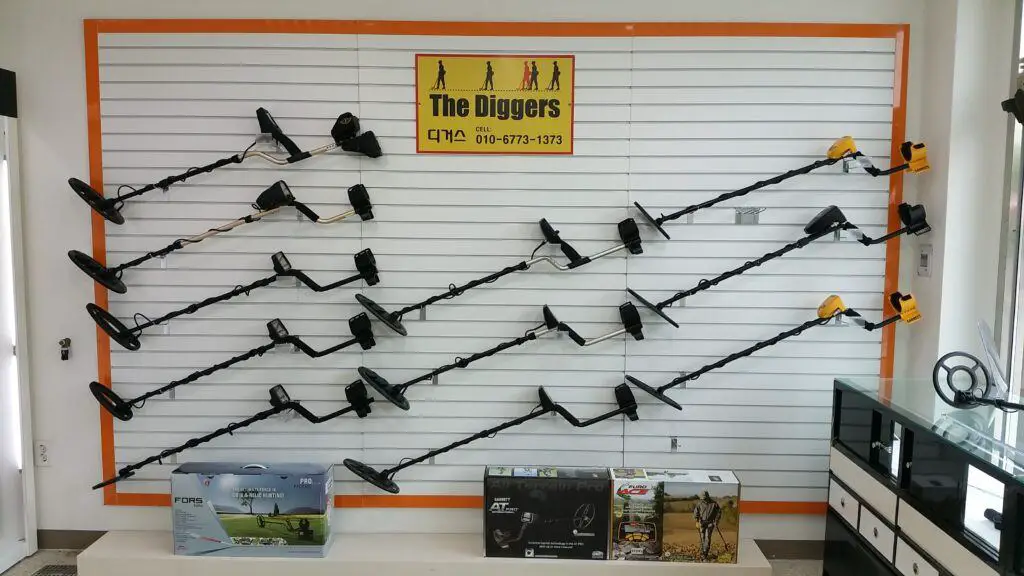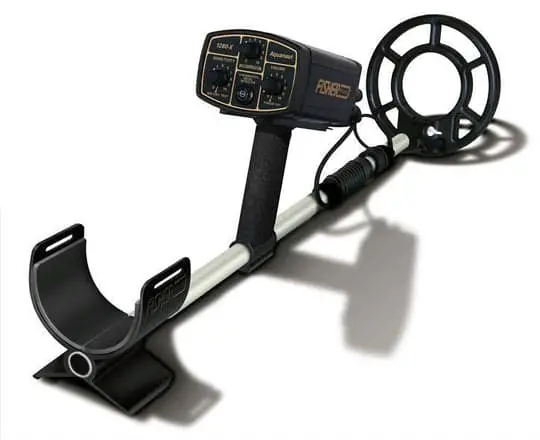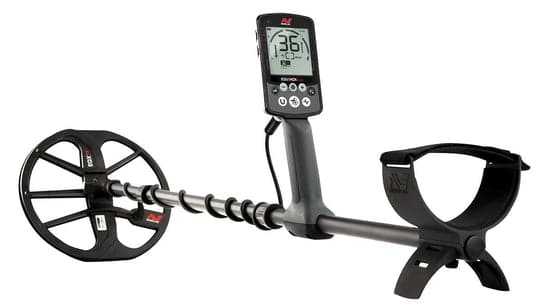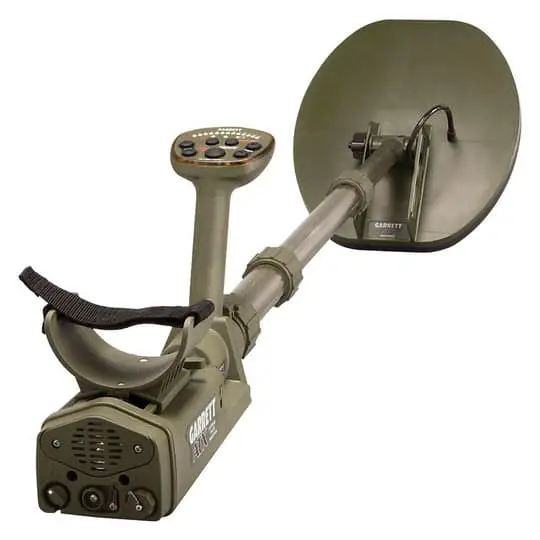One of the first things you find out when you start metal detecting is that it’s an intricate art that could require the user to have several different detector types, not just for coins and small metals. Aren’t all metal detectors the same? If not, what are the differences between the types of detectors?
Not all metal detectors are the same. They use different coils and frequencies to create deeper scans of the Earth and produce more accurate hits on minerals located beneath the soil.
Patience is another thing you will need if you plan on spending your free time down at the local beach with your metal detector. Some detectors won’t work near the surf and others are only good for certain types of metals. So read on and learn all about the different types of metal detectors and how they are different!
Are All Metal Detectors the Same?
Not all metal detectors are going to work the same. Each one is a specific tool for a job that could scan for a different type of metal or have a different scan area.
No. The bottom line is that different electrical coils and mode-changing knobs are what make the detectors function differently. These knobs and coils allow the device to do more scans and give them different modes to select from.
The Different Types of Metal Detectors

Knowing which type of metal detector, or knowing there are different types, could be a bit of a struggle for the uninitiated. Going off of price and customer reviews is usually how people approach new products. You should know a bit more about metal detectors before jumping in and throwing down your hard-earned money on a dud.
There are Three Different Types of Metal Detector
The different types of detectors will depend on how many coils they have and how they search for metal. However, you can expect a decent beginner unit with a display screen and multi-frequency, to cost about $150 to $300. These are always fun to play around with and are light enough that the older kids will love to take them on a treasure hunt.
The three main types of metal detectors are:
- VLF
- Multi-Frequency
- Pulse Induction
Each type of detector will give you a different look at what is underneath your feet or lead to a pirate’s treasure. Unfortunately, there isn’t one particular unit that does everything in metal detecting. That means if you get serious, there could be thousands of dollars and many different detecting units in your arsenal.
Very Low-Frequency Metal Detectors are Good for Single Frequency Hunts

VLF models are the best place to start for beginners and an excellent tool for veteran metal detectors. They are on the affordable end of the detector spectrum and are pretty easy to operate. However, they work on one frequency which means that they can only search for certain types of metal at specific depths.
The way the VLF detector works is with electrical coils. In the VLF, there are two, one sending and one receiving; these coils work to send a signal into the ground that bounces of smaller pieces of metal and gold. When the signal connects, it bounces back into the second coil and delivers a readout into the display.
A step-by-step of how a Very Low-Frequency metal detector work is:
- Lost Metal – Detecting cannot start without some poor soul who has lost something metal of value. It could be an engagement ring or an old coin given to them by their grandfather but losing it is their primary requirement. Often people will not even realize they have lost an item until hours later.
- Power the Unit – Depending on the type of metal detector you are using, a switch or knob will allow you to power the unit on. There could also be a display screen that will give a mock-view of the ground you are searching and some information like battery life and the frequency in which you are operating.
- Scan the Area – With your trusty or several, detectors pick a section of ground and run the machine back and forth over the area in slow movements. Be methodical and thorough with your searches and keep records if you need them. Take time to let the device linger, and you have a much better chance of finding something underground.
- Metal Ping – When the device moves over something metal, it will send a signal from the bottom plate to the display. It will give a solid alert tone or could be the old-school beeping tones. These tones are a reflection of what is underground and different alerts could mean different things.
- Time to Dig – Now that you have a solid tone, it is time to step away from the detector and break out the shovel or trench tool. The treasure could be just beneath some old leaves or several inches under the ground. The unit could display the depth, but it is always best to dig a couple of inches below if items are stacked together.
- Hoard the Treasure – Things you find in the ground could be worthless or some relic that gets you international fame and prestige. More than likely, it will be old coins or maybe the occasional piece of jewelry. Metal detecting is done for the joy of exploring more than the monetary value of the objects you may or may not find.
Metal detecting is about curiosity. Knowing how a VLF detector functions is a great introduction to the world of treasure hunting. VLF detectors are cheap and great gift ideas for the young scientist in your life. These simple models give people the building blocks they need to expand their arsenal and search for more desirable pieces and potentially search for gold.
Multi-Frequency Metal Detectors

Multi-frequency detectors work by using different frequencies at the same time to find objects of larger size and deeper depths. VLF detectors are only going to search at the same frequency and find the same types of metals around the same depths. MF works them in harmony to boost effectiveness in location and detection.
This is the middle ground price-wise for detectors. It is the second step into the larger world of detecting that, by this time, should be occupying large amounts of your free time. Be sharp and pay attention to not by a selectable detector as they are not the same. Selectable units can only change single frequencies, not combine them like MF detectors.
Some great things about a multi-frequency metal detector are:
- Increased Range – The thing that most hobbyists want with a multi-frequency detector is the ability to search larger areas and greater depths. This increase in range gives them more minerals to find and ups the payout if they snag a substantial relic. Range is everything when it comes to metal detecting and the bigger the better.
- Two-in-One – Multi-frequency models often have the ability to not only use multiple frequencies at once but also use several different single frequencies. This means you have an MF and a VLF in one machine. A good MF detector can replace three mediocre ones in a treasure hunter’s arsenal.
- Mineral Shield – In essence, the MF models create a shield against minerals in the ground that could force a signal but have no worth. These rogue signals being cut out eliminates a huge amount of unnecessary searching. This shield could be from minerals on the beach or from ions in the nearby seawater.
Multi-frequency metal detectors are another excellent tool for the stockpile. They can help find things deeper in the ground with much less resistance from pesky topsoil minerals, which could give a false alert. It is a great middle-ground for detectorists, and people have been known to find treasures worth thousands of dollars with a good MF detector.
Pulse Induction Metal Detectors Use a Different Kind of Technology

The coils used to scan for metals have been separated until this point. Then, with pulse induction, they work together to send a transmission signal into the ground. These transmission signals happen in the blink of an eye and can penetrate through all the minerals washed up on the beach, which means that you get a clearer signal on the sand than with any other model.
The PI models are your best bet to find things on the beach or even scan for gold. Unfortunately, they are expensive, and amateur scanners will not keep these in their bag of tricks. However, pulse induction has a powerful signal that allows you to scan the uneven or rocky ground in hopes of finding tiny bits of gold, which you can’t search for with other models.
A few things that make pulse induction metal detectors such a good option are:
- Terrain – A pulse induction detector gives you the option to search rougher terrain for your booty. Usually, flat areas near parks or heavily trafficked park areas are the places to be, but with a PI, you can scan in rocks and even down by the ocean.
- Targets – PIs will have some of the most extensive hit scans. The pulse in some models is so strong that it shows an outline of the shape underground. This means that if you are looking for something specific, hours are saved in false-positive signals and digging.
- Beach – It has been said before but being able to scan the beach with fewer false alerts is the best thing about pulse induction. People lose all kinds of electronics and jewelry at the beach, and pulse induction provides a strong enough signal that all the minerals washed up by the ocean can’t stop it.
Pulse induction metal detectors are top-of-the-line Cadillac detectors. They use a technology that produces a stronger signal with fewer false alerts. Unfortunately, these bad boys are going to be expensive. So be sure to do your homework and be dedicated to metal detecting before buying one of these models.
The Difference Between Metal Detectors
When it comes to metal detectors, a few things make them different. Aside from price, which is a massive factor in the market, there aren’t many ways to classify metal detectors. They have around the same number of coils, and some even operate with multiple frequencies. The best way to categorize them is by what they do, which is fantastic.
By now, we know that a metal detector works by sending a signal into the ground with the wand that bounces back to the readout on the handle. The signal finds bits of metal and other minerals down in the land that could be precious metals or a tin can someone buried decades ago.
The different ways that metal detectors work are:
- Single Frequency – Single frequency metal detectors are used for finding specific types of metals at particular depths. For instance, gold coins are one of the most sought-after items and single frequency, or VLF metal detectors, are great at finding bits of gold and silver that are just a few inches below the surface.
- Multiple Frequency – The next link in the chain is the multiple frequencies, or multi-frequency, metal detectors. They use a pair of electric coils to transmit two frequencies into the ground. These two frequencies combined create a strong search field that allows you to find more and different types of metal at different depths.
- Pulse Induction – Again, frequency and electric coils are the basis for these models. The major difference is that instead of using single or multiple frequencies it uses timed pulses that not only have a deeper and wider search field but also ping off much larger targets and can even work in shallow seawater.
Metal detectors aren’t much different from each other. The best way to remember how they work is to think of them like golf clubs in a bag. Each club will be used for a specific situation and will perform differently. Serious detecting can yield thousands of dollars but will have a high cost in equipment and work hours.
Conclusion – Are All Metal Detectors The Same?
Metal detecting is lots of fun, and people can find loot worth serious amounts of money with the correct equipment. However, all-metal detectors are not the same, and different materials are what make this divide. Some have coils that only use lower frequencies, that could find coins and jewelry but struggle on the beach or near the ocean.
The difference between metal detectors is how they produce a signal to scan the ground. How they achieve this depends on metal coils and power. With the appropriate charge, the coils will send a signal into the ground and alert the user, that’s you, of potential bounties underneath the soil.
